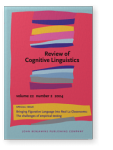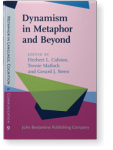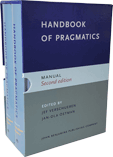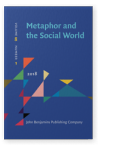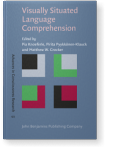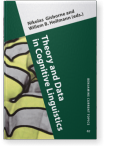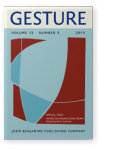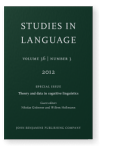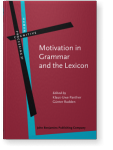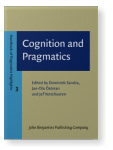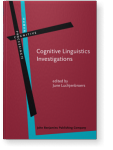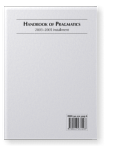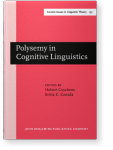Teenie Matlock
List of John Benjamins publications for which Teenie Matlock plays a role.
Journal
Title
Dynamism in Metaphor and Beyond
Edited by Herbert L. Colston, Teenie Matlock and Gerard J. Steen
[Metaphor in Language, Cognition, and Communication, 9] 2022. vii, 359 pp.
Subjects Cognition and language | Communication Studies | Theoretical linguistics
2022 Introduction Dynamism in Metaphor and Beyond, Colston, Herbert L., Teenie Matlock and Gerard J. Steen (eds.), pp. 11–28 | Introduction
2022 Cognitive science Handbook of Pragmatics: Manual, Verschueren, Jef and Jan-Ola Östman (eds.), pp. 195–216 | Chapter
2022 Fictive motion in the wild Dynamism in Metaphor and Beyond, Colston, Herbert L., Teenie Matlock and Gerard J. Steen (eds.), pp. 109–128 | Chapter
Fictive motion is a form of figurative language that describes the shape and arrangement of objects in physical space. Examples are The highway goes along the coast, A trail follows the creek for two miles, and Boulders run along the edge of the property. Such statements typically feature a… read more
2018 Metaphor-enriched social cognition and spatial bias in the courtroom Metaphor and the Social World 8:1, pp. 81–99 | Article
It is known that courtroom decisions can be influenced by subtle psychological biases, such as asking leading questions. Informed by metaphor research on the connection between spatial proximity and intimacy (e.g., ‘we are close’, ‘their views are far apart’), this paper reports four experiments… read more
2016 Figurative language processing: Fictive motion and the visual world Visually Situated Language Comprehension, Knoeferle, Pia, Pirita Pyykkönen-Klauck and Matthew W. Crocker (eds.), pp. 185–204 | Article
This chapter is concerned with visual processing in the context of figurative language. Included is background on research that has used the visual world paradigm to study the processing of fictive motion sentences. These sentences, which are ubiquitous in everyday language, include a motion verb… read more
2014 Smashing new results on aspectual framing: How people talk about car accidents Theory and Data in Cognitive Linguistics, Gisborne, Nikolas and Willem B. Hollmann (eds.), pp. 239–259 | Article
How do people describe events they have witnessed? What role does linguistic aspect play in this process? To provide answers to these questions, we conducted an experiment on aspectual framing. In our task, people were asked to view videotaped vehicular accidents and to describe what happened… read more
2013 Using space to talk and gesture about numbers: Evidence from the TV News Archive Where do nouns come from?, Haviland, John B. (ed.), pp. 377–408 | Article
This paper examines naturally occurring gestures produced in descriptions of numbers and quantities in television newscasts. The results of our analysis show that gestures reveal the metaphorical and spatial nature of numerical thinking. That is, speakers’ hands mimic known spatial mappings… read more
2012 Smashing new results on aspectual framing: How people talk about car accidents Theory and data in cognitive linguistics, Gisborne, Nikolas and Willem B. Hollmann (eds.), pp. 699–720 | Article
How do people describe events they have witnessed? What role does linguistic aspect play in this process? To provide answers to these questions, we conducted an experiment on aspectual framing. In our task, people were asked to view videotaped vehicular accidents and to describe what happened… read more
2011 The conceptual motivation of aspect Motivation in Grammar and the Lexicon, Panther, Klaus-Uwe and Günter Radden (eds.), pp. 133–148 | Article
Aspect expresses information about how events unfold in time. In English, imperfective aspect is known to widen the temporal scope of the event described, but little is known about how such imperfective descriptions are processed or what motivates their use. This chapter investigates the conceptual… read more
2009 Cognitive science Cognition and Pragmatics, Sandra, Dominiek, Jan-Ola Östman and Jef Verschueren (eds.), pp. 86–109 | Article
2006 4. Depicting fictive motion in drawings Cognitive Linguistics Investigations: Across languages, fields and philosophical boundaries, Luchjenbroers, June (ed.), pp. 67–85 | Chapter
2005 Cognitive science Handbook of Pragmatics: 2003–2005 Installment, Östman, Jan-Ola and Jef Verschueren (eds.), pp. 1–30 | Article
2001 Psycholinguistic Perspectives on Polysemy Polysemy in Cognitive Linguistics: Selected papers from the International Cognitive Linguistics Conference, Amsterdam, 1997, Cuyckens, Hubert and Britta E. Zawada (eds.), pp. 213–240 | Article
